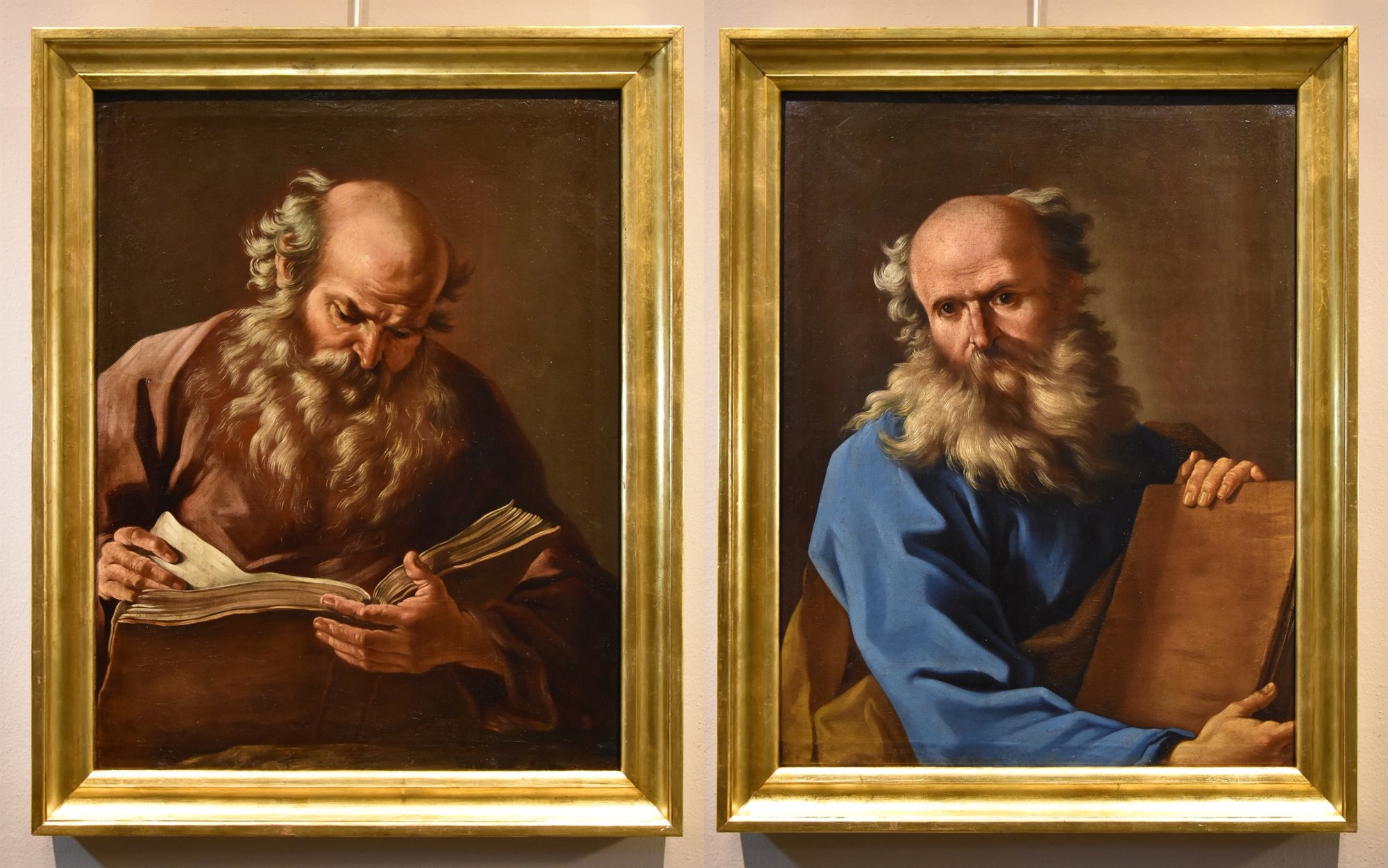Ritratto del filosofo Democrito
Giovanni Battista Beinaschi (Fossano 1634 ca. - Napoli 1688)
Giovanni Battista Beinaschi
(Fossano, c. 1634 – Naples, 1688)
Portrait of the philosopher Democritus (showing a book with a white cover)
Oil on canvas
82 x 64 cm
Framed 95 x 75 cm.
The painting shows an intense image of the Greek philosopher Democritus, portrayed as a mature man holding a book in his hands, an emblem of a life dedicated to study, and is presented here as a pendant to the portrait of the philosopher Heraclitus (see photo in the details).
This type of subject, dedicated to the great philosophers or scholars of antiquity, was very dear to the figurative tradition and collecting tastes of the 17th century: in our case, we have one of the two key figures of pre-Socratic philosophical thought, often juxtaposed because of their opposing and complementary views of the human condition.
If we look at the iconography of the two philosophers, Heraclitus and Democritus, the portrait presented here follows the tradition that generally contrasts the sombre and contemplative character of the former with the more open and detached character of the latter.
This opposite attitude towards reality and the human condition made them symbolic figures in thought and a favourite subject of various artists, especially in the Baroque period, due to their strong symbolic value and implications for the interpretation of the human condition (1).
In the painting shown here, Democritus, “the atomist philosopher”, gazes fixedly and detachedly at the observer, representing his view of life.
According to his philosophy, in fact, all reality is just a meaningless dance of atoms, and it is therefore useless to strive to find meaning in existence. There is no point in agonising over the absurdity of the world, but rather in distancing oneself from passions and facing them with lightness.
The observer is captivated by the enigmatic nature of his expression, and the book with the white cover that the philosopher is holding becomes a symbol of this.
As for the style of the work, the scholar is depicted with a profound scenographic approach in a vigorous Baroque style, with marked facial features. The backlighting effects and a magical chiaroscuro atmosphere make the character dynamic, oriented towards a light source that skims his face.
By studying the characteristics and related details, we can narrow down the attribution to the late Baroque painter Giovan Battista Beinaschi (1634 - 1688), whose prolific activity was concentrated between Rome, where he trained, and Naples. Nevertheless, he moved frequently throughout his career between Turin, Parma, perhaps Bologna and Genoa, assimilating varied artistic influences from each place.
Although he initially showed a propensity for Roman classicism, this influence was soon supplanted by an increasingly pronounced approach to the Baroque cultural front.
(1) We can find many examples of this interesting iconography in art, for example in Hendrick ter Brugghen's “Heraclitus and Democritus” (1619, owned by Christie's, London, https://www.christies.com/en/lot/lot-6298681?ldp_breadcrumb=back ), or in the same subject by Gregorio Preti (https://mattia-preti.it/279-eraclito-e-democrito/ ).
ADDITIONAL INFORMATION:
The work is sold complete with a gilded wooden frame and comes with a certificate of authenticity and a descriptive iconographic card.
We arrange and organise the transport of purchased works, both in Italy and abroad, through professional and insured carriers. It is also possible to view the painting in our gallery in Riva del Garda. We would be delighted to welcome you and show you our collection of works.
Please contact us, without obligation, for any additional information.
Follow us on:


